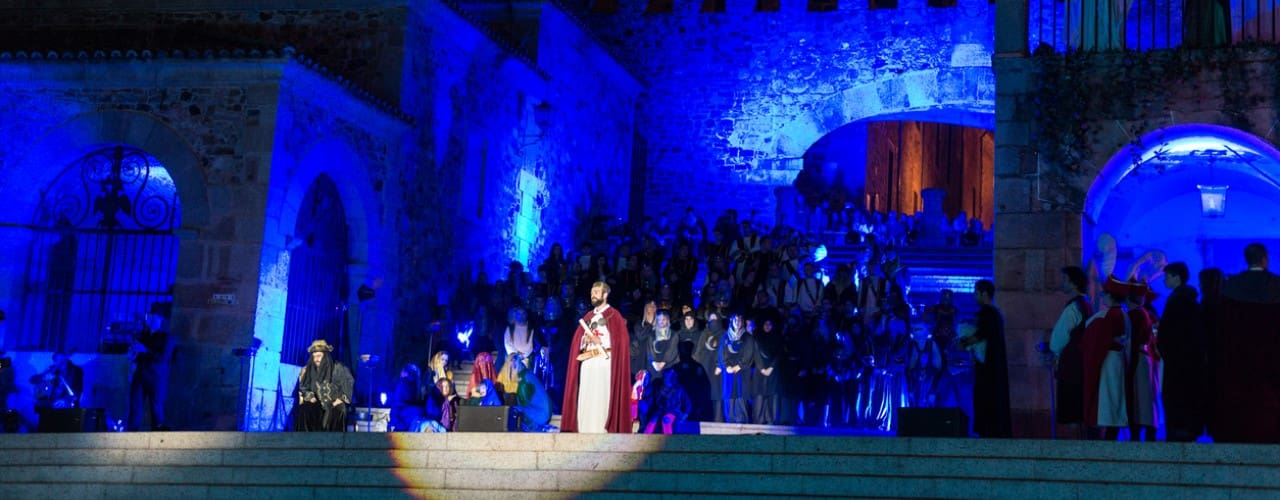The Art of Staging
News
Matt
The Art of Staging
Wed, 4 Jun 2025
In theatre, what captivates audiences is not only the performances but also the environments that surround them. This story is brought to life through the art of staging, where creative construction plays a pivotal role. Staging is the imaginative and meticulous process of designing and building sets that transform empty stages into vibrant worlds.
The Importance of Staging
- Creating Immersive Experiences
The primary purpose of staging is to create an immersive experience for the audience. A well-constructed set can transport viewers to different times, places and realities, making the story more engaging and believable. Creative construction is at the heart of this immersion, utilising innovative techniques and materials to build sets that are both realistic and fantastical. - Enhancing Storytelling
Staging is an essential storytelling tool. The visual elements of a set can convey themes, mood, and context, adding depth to the narrative. Creative construction allows set designers to incorporate symbolism and subtle details that enrich the story. For example, the choice of colours, textures, and props can provide insights into a character’s personality or the historical period in which the story is set. - Supporting the Performers
A thoughtfully constructed set not only enhances the audience’s experience but also supports the performers. The layout and design of the stage can influence the actors’ movements and interactions, making their performances more natural and dynamic. Creative construction ensures that the set is functional and safe, providing actors with an environment where they can perform at their best.
Elements of Staging
- Concept and Design
The first step in staging is conceptualisation. This involves understanding the director’s vision and the requirements of the script. Designers will brainstorm and sketch ideas, considering how each element of the set will contribute to the overall production. This stage is crucial for aligning the creative vision with practical execution. - Set Construction
Once the design is finalised, the construction phase begins. This is where the magic of creative construction truly comes to life. Using a combination of traditional craftsmanship and modern technology, set builders create the physical structures that will form the backdrop of the performance. Materials such as wood, metal, fabric, and foam are commonly used, each chosen for their unique properties and aesthetic qualities. - Scenic Painting and Detailing
Scenic painting is an art form in itself. It involves adding colours, textures, and finishes to the constructed sets, transforming them from plain structures into lifelike environments. Creative construction techniques in scenic painting include faux finishing, ageing, and trompe-l’œil, which create illusions of depth and realism. Attention to detail is paramount, as even the smallest elements can significantly impact the audience’s perception. - Lighting and Special Effects
Lighting is a critical component of staging that enhances the visual impact of the set. It highlights key areas, sets the mood, and guides the audience’s attention. Creative construction in lighting involves designing and positioning lighting fixtures to achieve the desired effects, whether it’s the warm glow of a sunset or the eerie shadows of a haunted house. Special effects, such as fog, pyrotechnics, and projections, add another layer of excitement and realism to the performance. - Props and Furnishings
Props and furnishings are the finishing touches that bring a set to life. These items must be carefully selected or crafted to fit the production’s aesthetic and period. Creative construction ensures that props are not only visually appealing but also functional and durable for repeated use. This includes everything from furniture and everyday objects to fantastical creations that transport the audience to other worlds.
The Creative Construction Process
- Collaboration and Communication
The process of creative construction in staging is highly collaborative. Set designers, builders, painters, and lighting technicians must work closely together to ensure that every element of the set aligns with the overall vision. Effective communication is essential to address challenges and make adjustments throughout the construction process. - Innovation and Problem-Solving
Staging often involves overcoming practical challenges and constraints. Creative construction requires innovative problem-solving skills to design sets that are not only visually stunning but also practical and safe. This might involve finding ways to make large structures lightweight and easy to move or developing mechanisms for quick set changes. - Sustainability and Efficiency
In recent years, there has been a growing emphasis on sustainability in staging. Creative construction now includes using eco-friendly materials and practices to minimise waste and reduce the environmental impact of production. This shift towards sustainability also encourages efficiency in design and construction, promoting the reuse and recycling of set pieces.
The art of staging is a blend of creativity, technical skill, and collaborative effort. At its core is creative construction, the process of building sets that captivate and transport audiences. As we continue to push the boundaries of what is possible in theatre, creative construction will remain what brings stories to life.
Still Have Questions?
Our friendly team is here to help you out.

